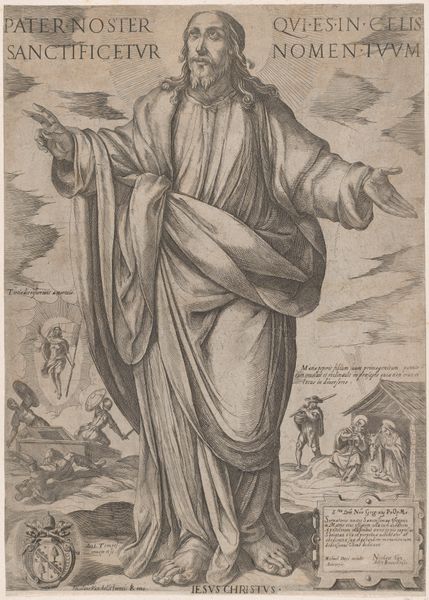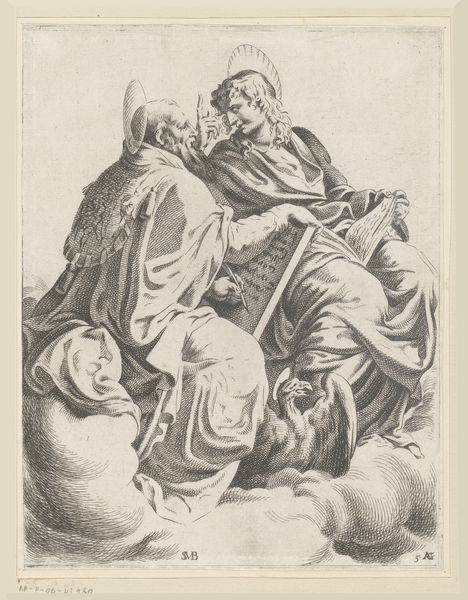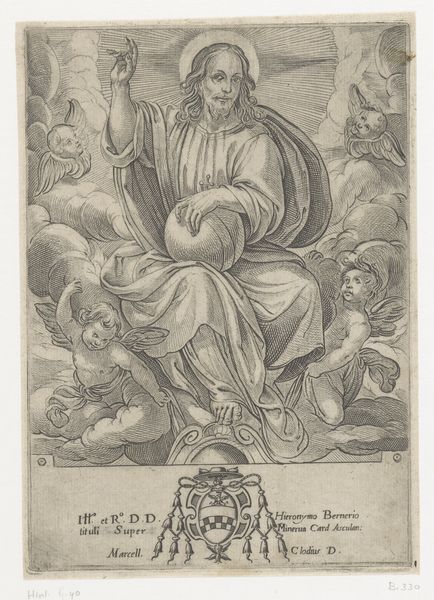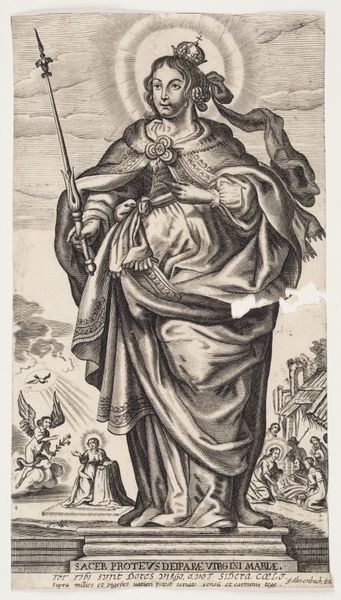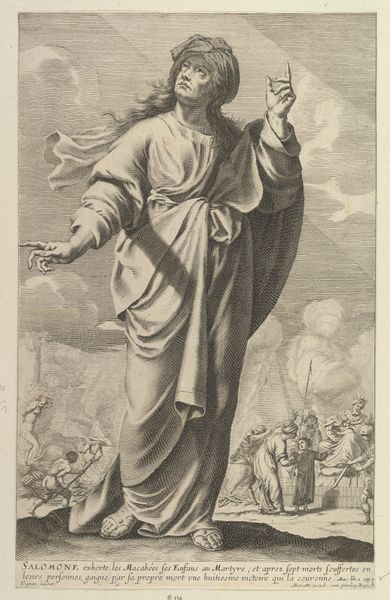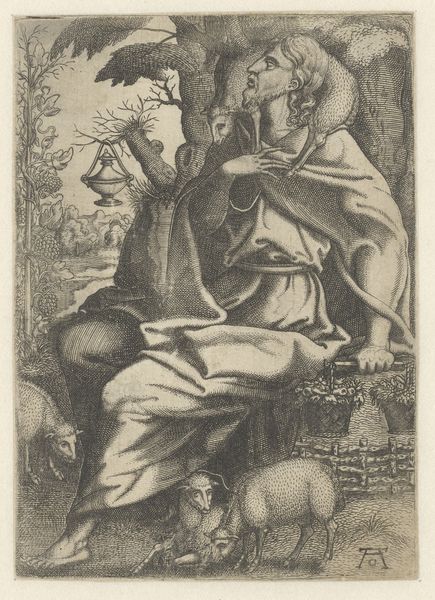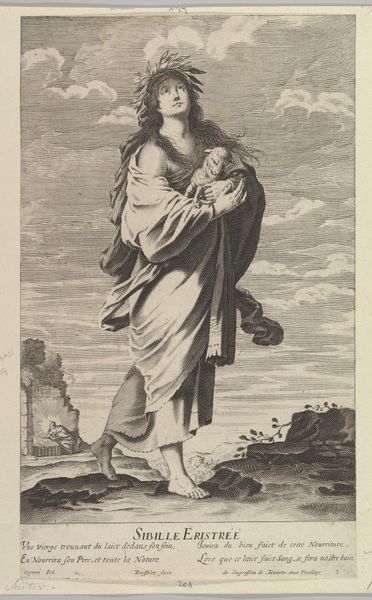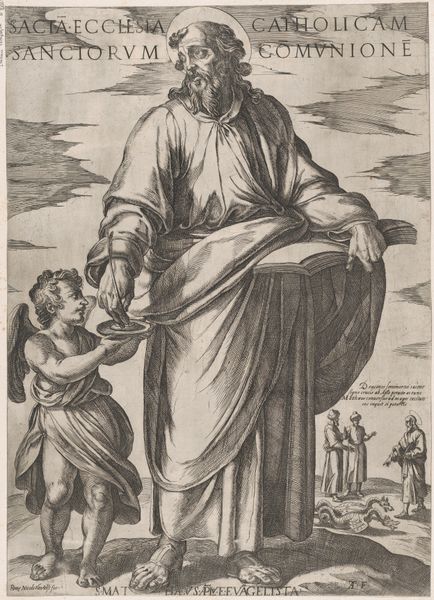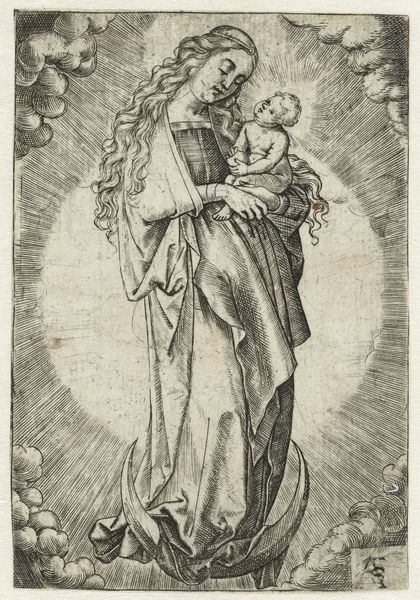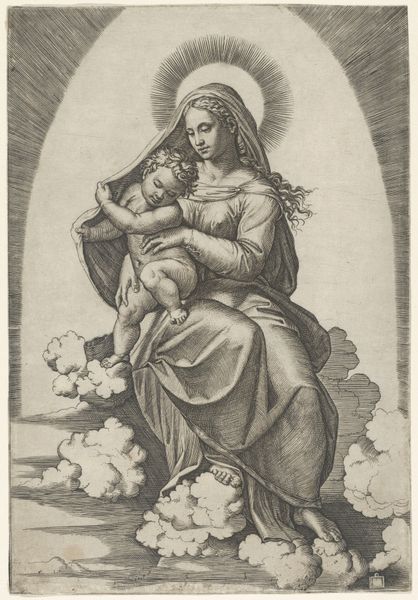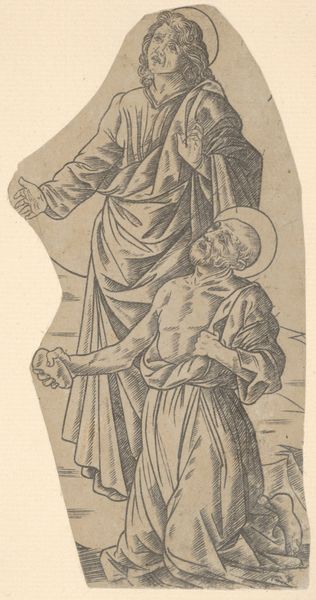
engraving
#
portrait
#
baroque
#
history-painting
#
engraving
Dimensions: 257 mm (height) x 140 mm (width) (bladmaal)
Editor: This engraving, "Christ as Saviour of the World," dating from 1609 to 1672, is striking. It has a very performative feel to it, in that we see Christ presenting himself in such a way that seeks to command. The work presents a figure of power and divine authority, with Christ positioned above a host of smaller, venerating figures. How would you interpret its meaning and impact, considering the context of its creation and how it could be publicly received? Curator: I see it as a potent example of Baroque visual rhetoric. The dramatic chiaroscuro, the flowing drapery, and Christ's commanding gesture, holding what appears to be a globe or orb, are all elements designed to assert authority. Let's consider what it means to depict Christ with such direct power at this specific historical moment. Editor: Well, during the Baroque era, the Catholic Church was very interested in counter-reformation; asserting its dominance. So it would align to some extent? Curator: Precisely. Prints like these, often widely distributed, were crucial tools in shaping religious and political identity. Ask yourself: what social and institutional needs might this imagery have served? What message was intended for the public and how did it play into wider cultural debates? Editor: So it’s less about personal spiritual connection, and more about public assertion and projecting the church’s authority? That shifts my understanding. Curator: Indeed. Think about the setting – a kind of elevated stage with people at the lower registers – which amplifies that sense of performative authority. The question of "art for whom?" is vital to ask here. Now, how might different viewers react to this image at the time, versus now? Editor: That’s really broadened my perspective. I was initially focused on the artistic technique, but the social and political underpinnings change everything. Thanks! Curator: Likewise. Considering those contexts allows us to appreciate not just what the image *is*, but what it *does* and who it is *for.*
Comments
No comments
Be the first to comment and join the conversation on the ultimate creative platform.

